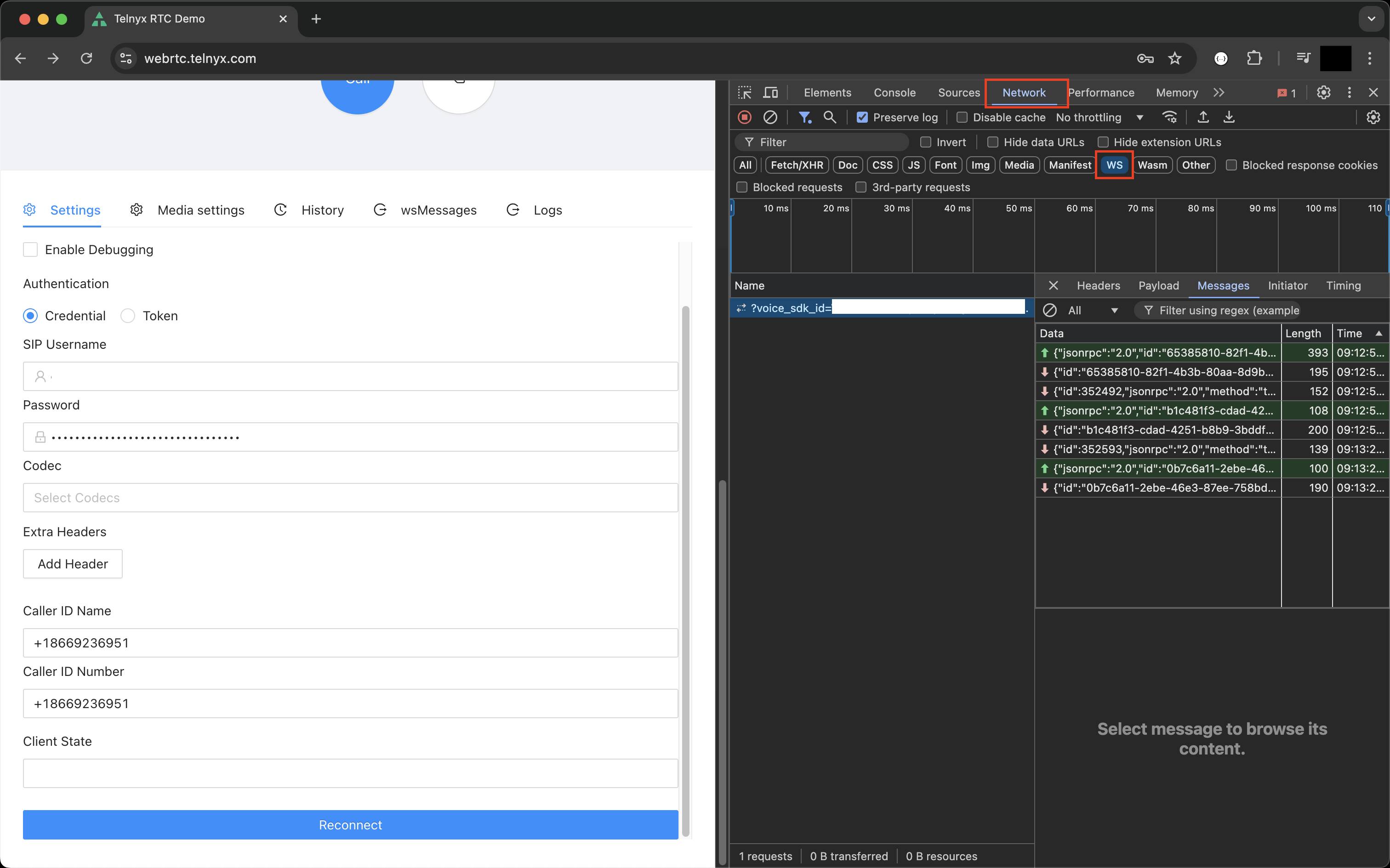Anatomy of a JS SDK Client & Call
While some differences exist between the JS SDK and the mobile SDKs, they follow a similar client lifecycle and call flow. The JS SDK demo app is used here as it’s far easier to set up the application (just load up webrtc.telnyx.com) and perform debugging using browser tooling.Overview
The SDK does two main things:- Establishes an active websocket connection to send and receive signaling messages to and from rtc.telnyx.com.
- Establishes a media session for a call
Client Instantiation & Authentication
- Go to webrtc.telnyx.com
- Right click; Inspect; Select Network tab and filter WS traffic
- Follow this page to successfully register the demo app.

- creates a session object and
- registers handlers for all 4 socket events
connect method on the SDK client …
- Initiates a WebSocket connection to rtc.telnyx.com
- Once the socket is open, the login message is sent to rtc.telnyx.com.
- A
telnyx_rtc.clientReadyevent from rtc.telnyx.com triggers atelnyx_rtc.gateStatequery from the SDK client - A
REGEDevent from rtc.telnyx.com bubbles up astelnyx.ready.
Call Initiation
- In another tab, open chrome://webrtc-internals/
- Fill in “Call destination” with +18008648331 (United Airlines IVR)
- Click “Call”

RTCPeerConnectionis instantiated.getUserMediais invoked to obtain user’s permission for audio and eventually theMediaStream
addTransceiveris invoked to add the local stream to the sender of theRTCPeerConnection.
- The previous step triggers the
negotiationneededevent.
- In the event handler, the SDK invokes
createOffer.
- This API call will eventually create a
RTCSessionDescriptionwith information on the local media stream.
- The SDK will then invoke the
setLocalDescriptionto set the SDP of the client peer.
- Concurrently,
createOfferalso kicks off the ICE candidate gathering.
- When all is done,
icecandidateevent triggers withcandidate = nullto indicate the process is completed. Subsequently, the existing local SDP parameters are augmented with the ICE candidates. - At this point, all necessary info are present to send the invite to rtc.telnyx.com.
- As a result, on the websocket, Message #1 through #4 are observed.
- At Message #5, rtc.telnyx.com sends over its SDP in the
telnyx_rtc.mediaevents. - Upon receipt of this message, the SDK invokes
setRemoteDescriptionto set the SDP of the remote peer.
- Finally, two peers of the
RTCPeerConnectionare fully identified. connectionState changes from connecting to connected.
- Media will flow over UDP.

